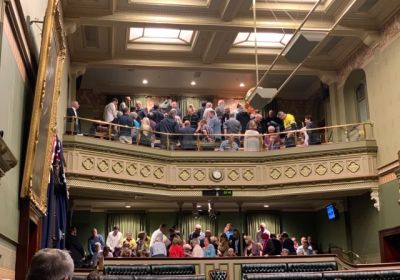
Peter Boyle reports that bus drivers and their supporters turned their backs on NSW transport minister Andrew Constance on March 5, in protest at the government's privatisation of bus services.

Peter Boyle reports that bus drivers and their supporters turned their backs on NSW transport minister Andrew Constance on March 5, in protest at the government's privatisation of bus services.
